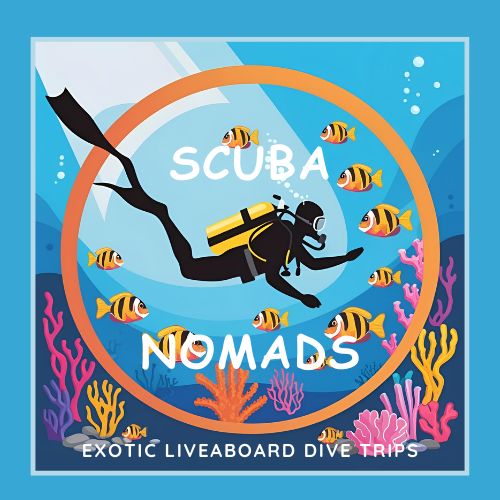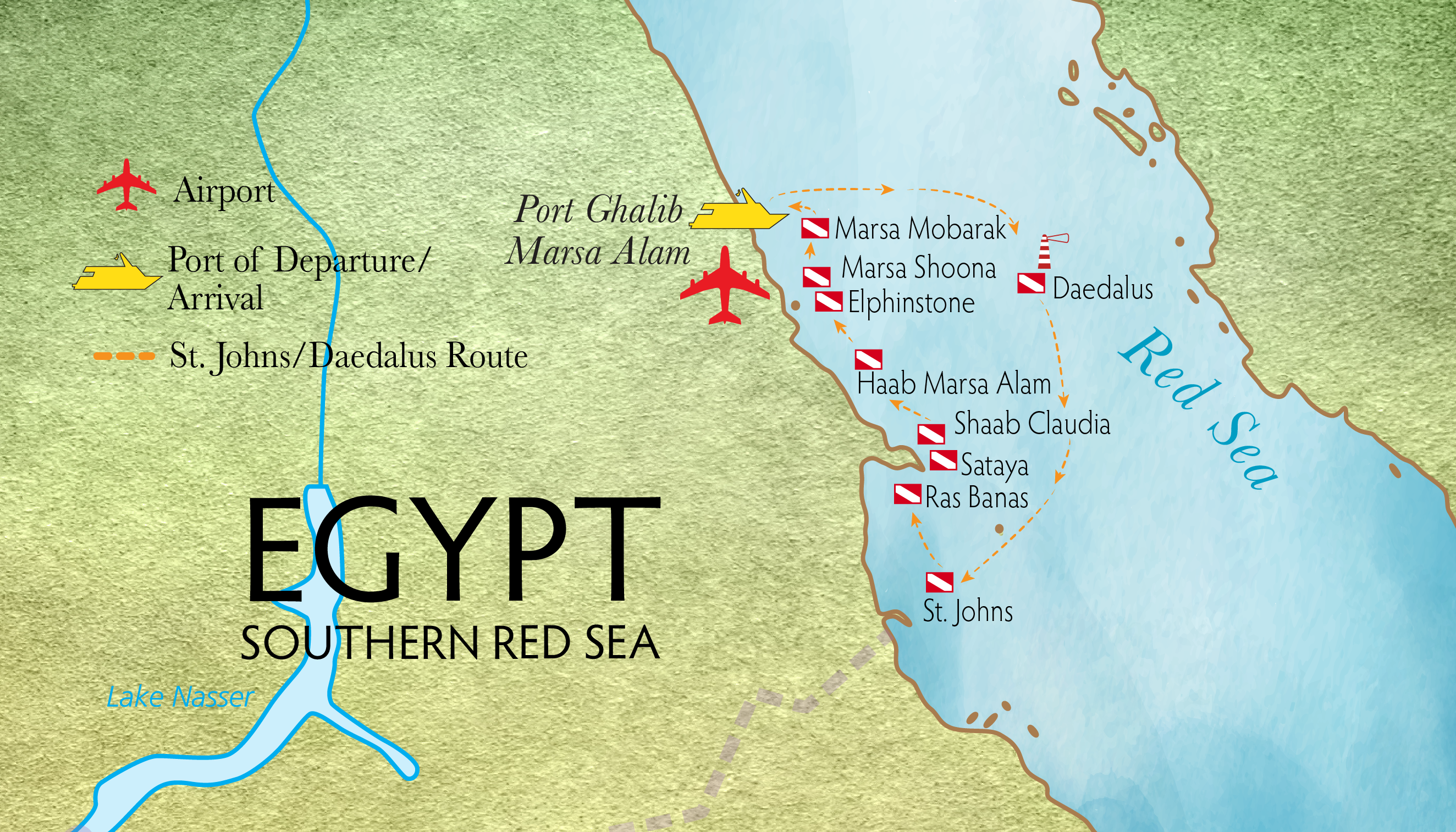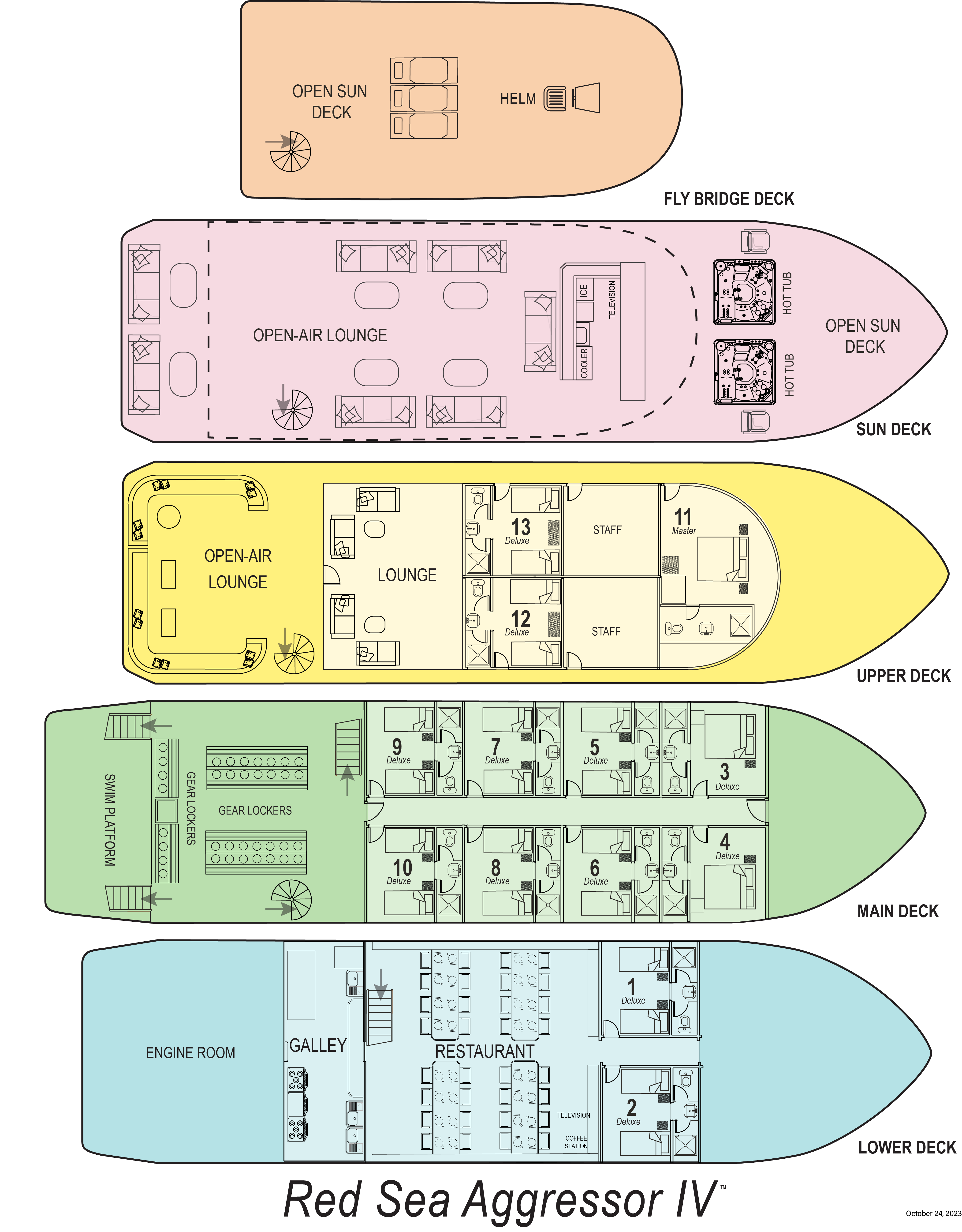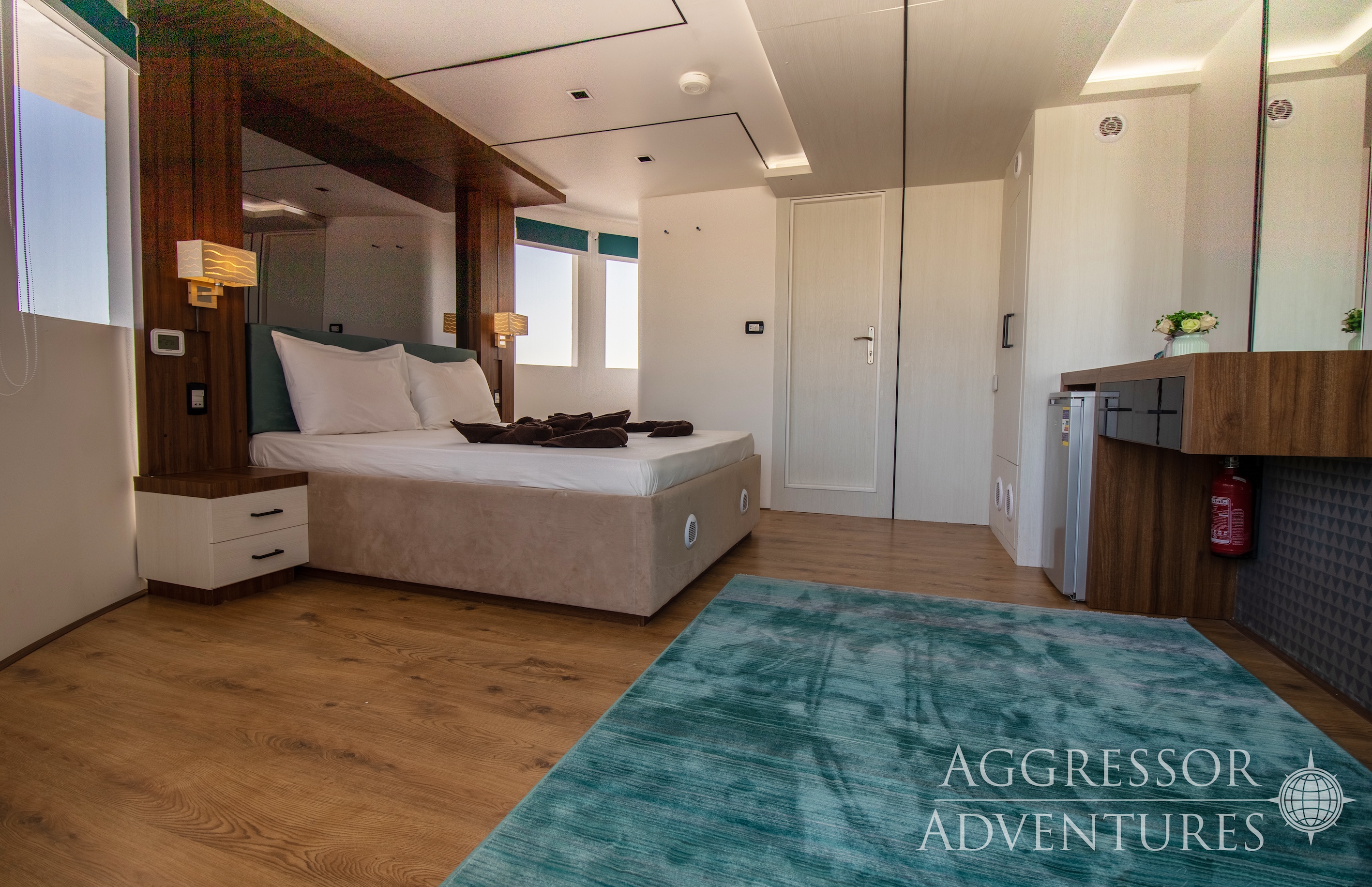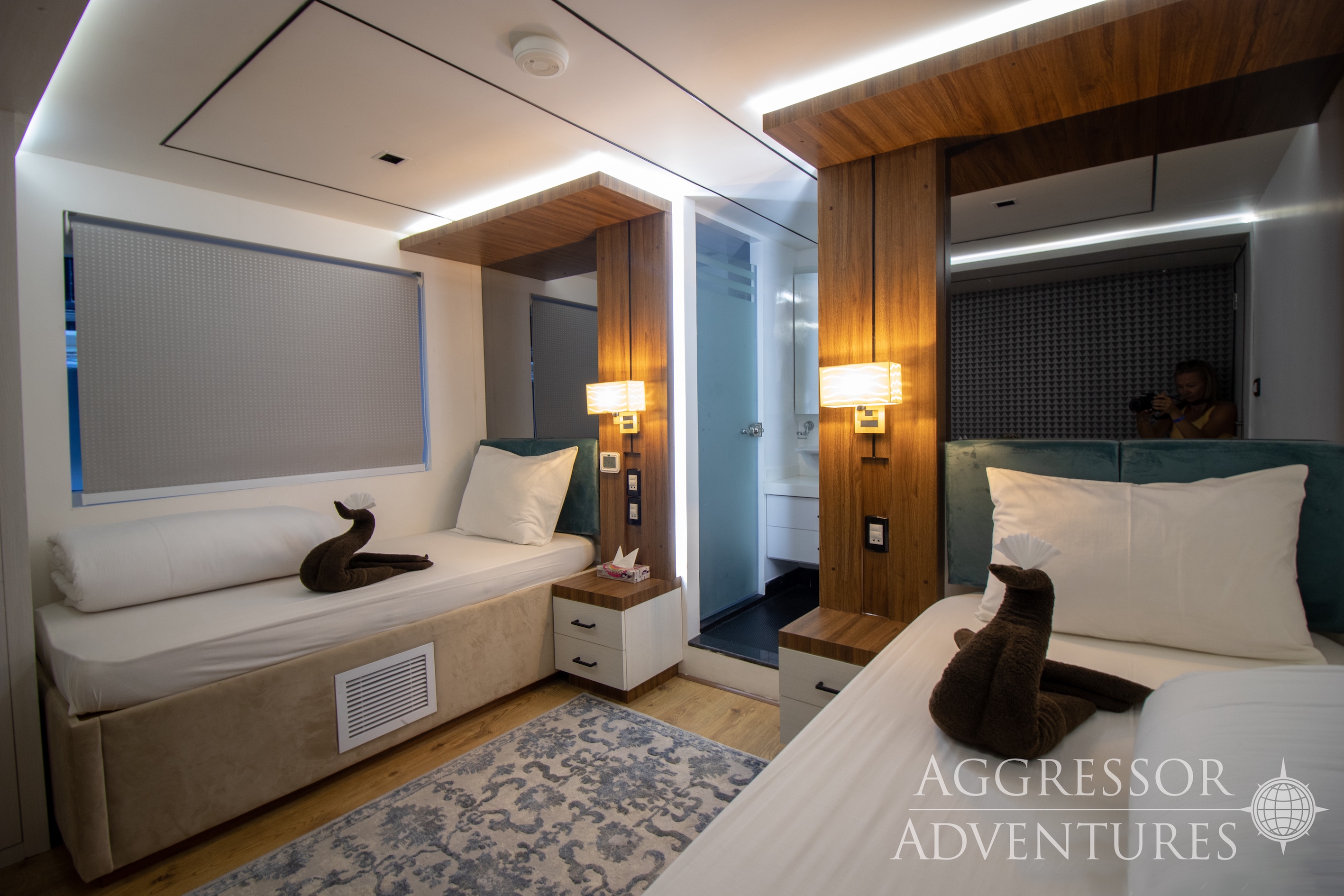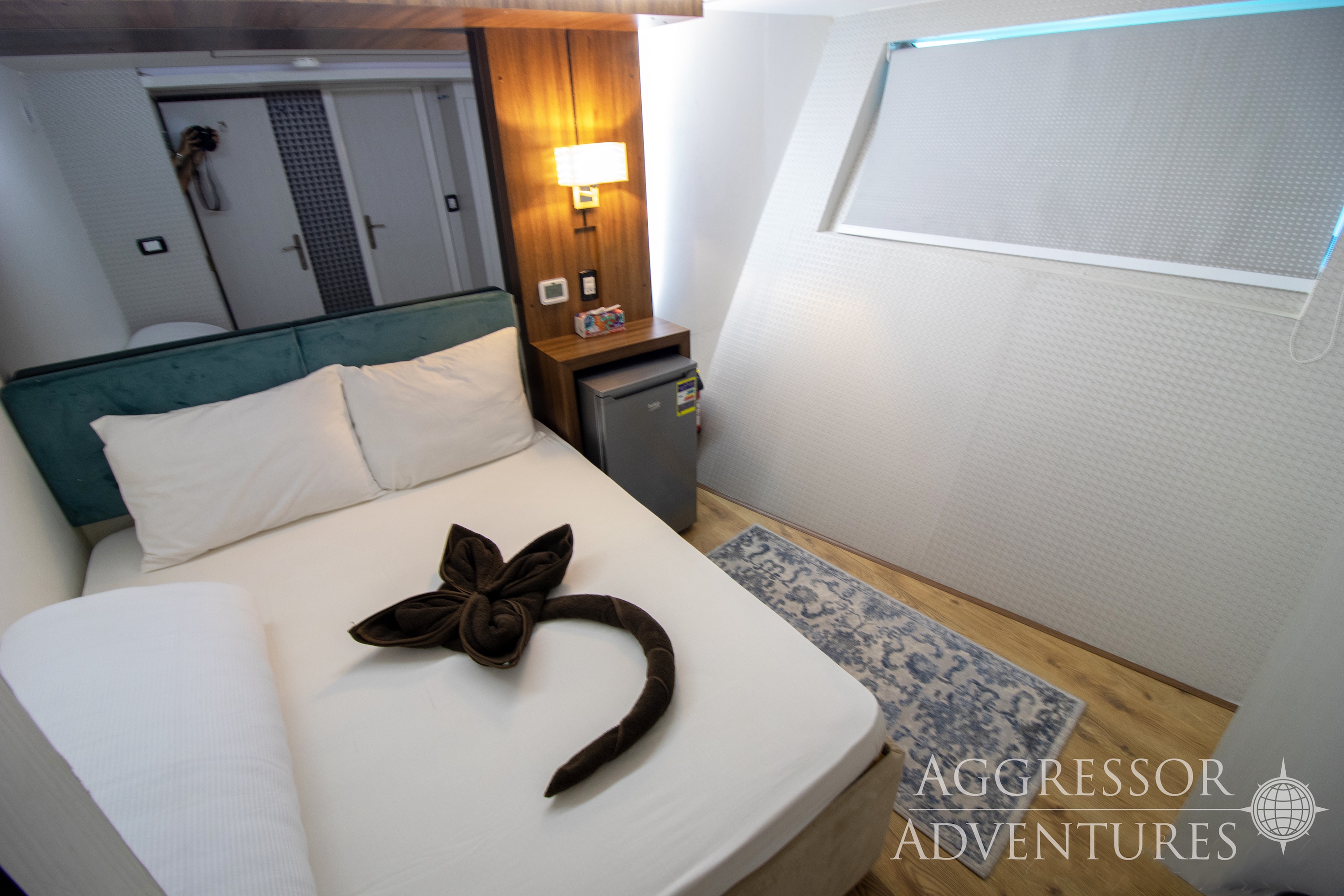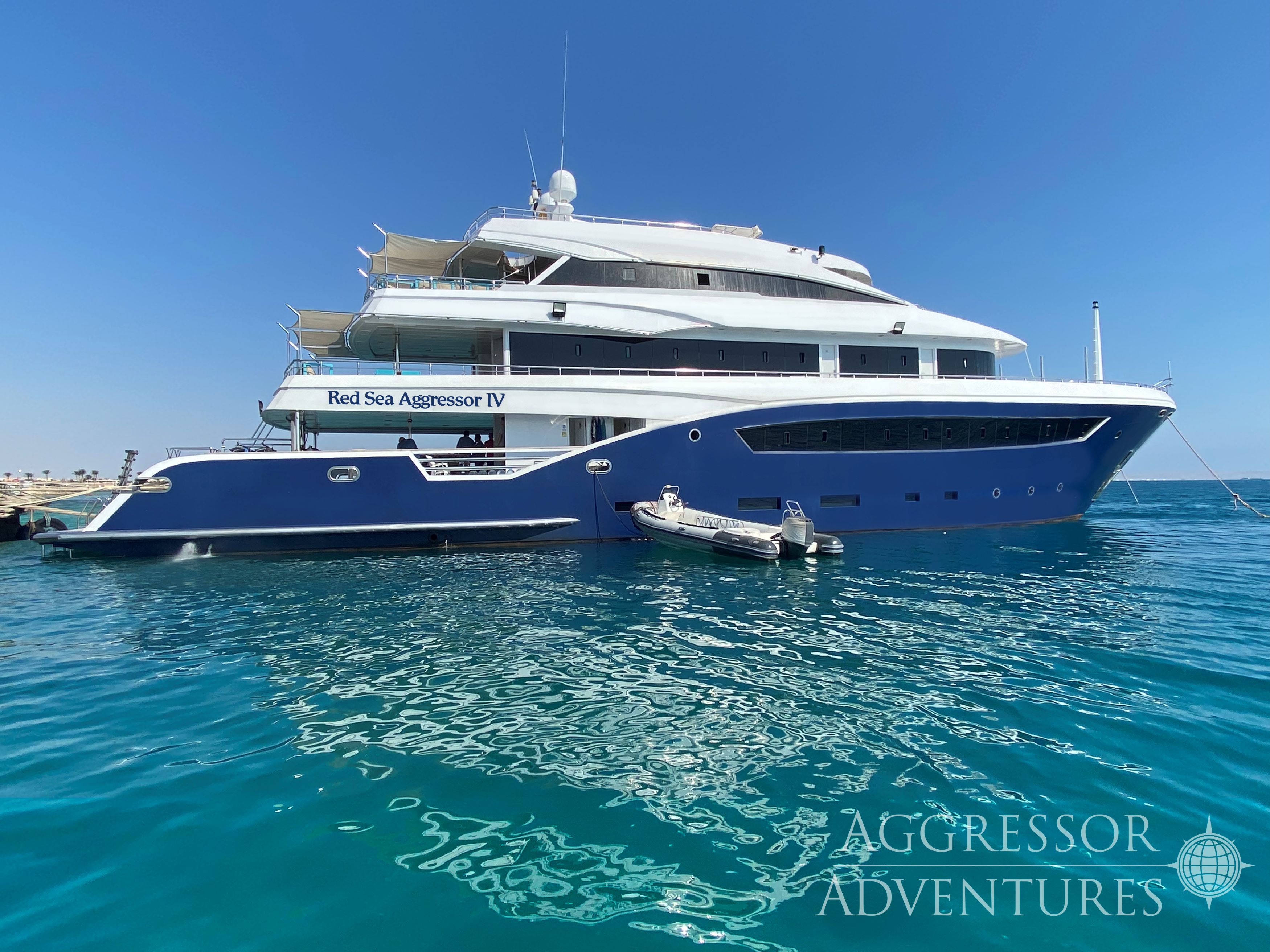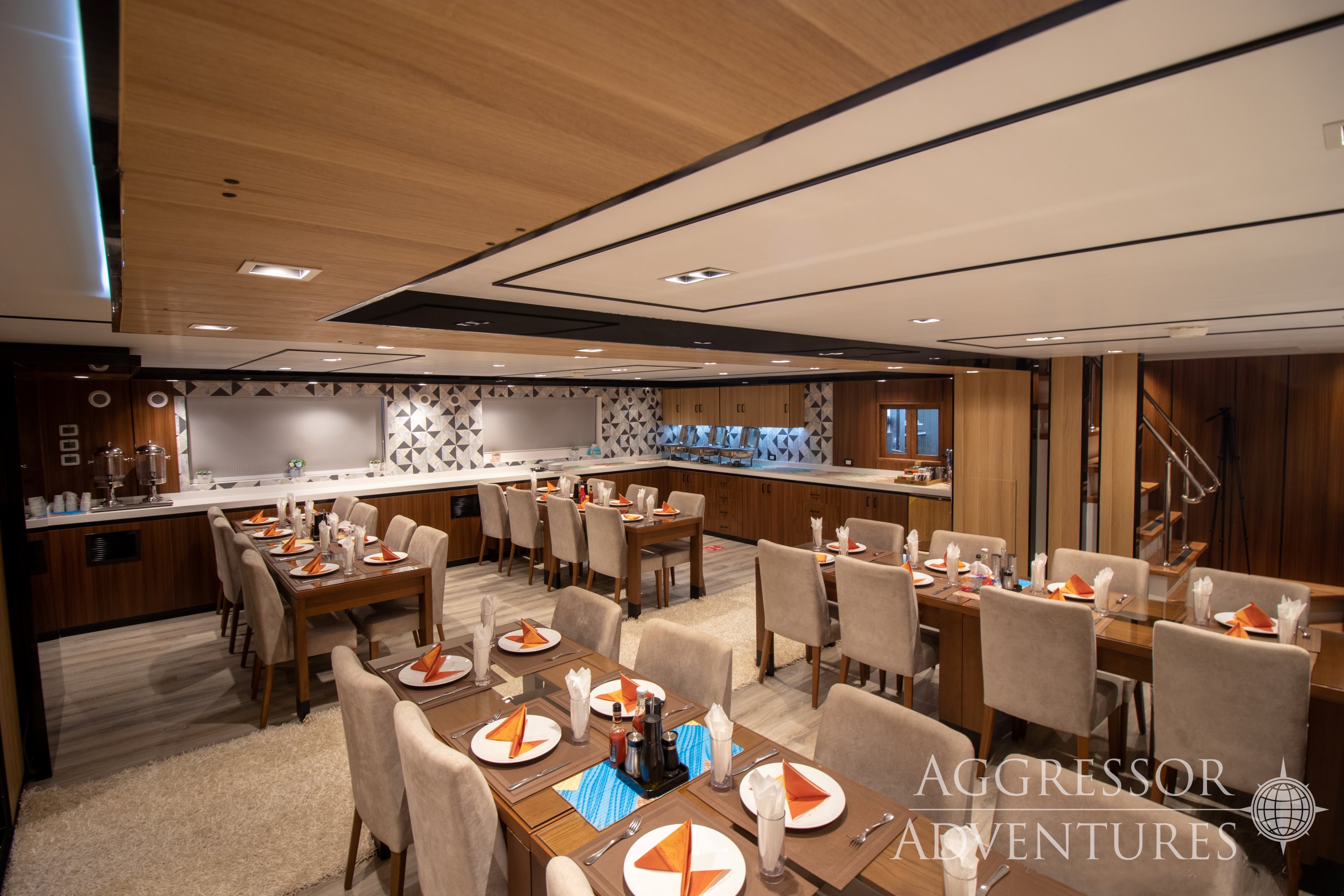Dive Itineraries
7 Night Southern Red Sea
Brothers - Daedalus - Elphinstone Route
The Southern Red Sea island itinerary to the Brothers, Daedalus and Elphinstone consists of mainly drift diving from the Red Sea Aggressor IV’s two 6.5 metre skiffs. They are each capable of carrying up to 10 guests for quick access to even the most remote dive sites. Guests may dive up to 3-4 dives per day on this itinerary.
Dive Sites in the Egyptian Southern Red Sea Brothers - Daedalus - Elphinstone Route, include:
Big Brother:
The Brothers (Big Brother and Little Brother, or in Arabic, 'El Akhawein') are two small islands in the Southern part of the Red Sea. They are situated 67 km out to sea from Al Qusayr. Above water, Big Brother features a lighthouse which was built by the British in 1883 and is manned by the Egyptian military. Underwater, there are two wrecks: Numidia and Aida. The walls of Big Brother plunge down into the blue almost vertically. Shallow swim-throughs are concealed in the wall on the west side of the site making them fun to discover. Hard and soft corals, including some Gorgonian Fans cover the reef and the ubiquitous Anthias are found in the thousands. Fish of all sizes and species live here, including large pelagic life such as Hawksbill Turtles, Grey Reef Sharks, Thresher Sharks, Longimanus (usually found from October/November), and occasionally, Hammerhead Sharks.
Little Brother:
Little Brother is, as the name suggests, the smaller of the two islands and is located 1 km to the South of Big Brother. Much like Big Brother, the currents can be strong, or not present at all, and they often change at a moment's notice, adding to the adventure and excitement. Deep walls surround the island with a glorious plateau in the North. Here, it feels like diving in an aquarium, with a huge variety of marine life including the larger Hawksbill Turtles, Grey Reef Sharks, Thresher Sharks, and Hammerhead Sharks. The 'Gorgonian Forest' lies in the South-East of the site. Longnose Hawkfish perch on the large Gorgonians, however, their shy temperament means that they can be a challenge to photograph!
Daedalus:
This large reef, also referred to as Abu El Kizan, is found 80 km offshore from Marsa Alam. A lighthouse which was built in 1861 by the British stands tall on the small artificial island in the centre of the reef. Today it is manned by the Egyptian military. Currents tend to be much more predictable here, and divers have an excellent opportunity to spot large pelagic life such as schooling Hammerhead Sharks, Thresher Sharks which are commonly seen in the North. Manta Rays can be found anywhere (from March to October), and Grey Reef Sharks and Whitetip Reef Sharks patrol the reef walls. Whale Sharks occasionally pass by in the summer months. Broccoli Corals in a range of candy colours grow out from the reef on all sides. There are pristine hard coral formations in the North and East especially, while overhangs are home to schools of Glass Sweepers. The South plateau is covered in yellow Litophyton Arboreum and Pulsing Xenia. The West side has two spectacular sights... 'Anemone City' is a section of the reef wall which is covered in Magnificent Anemone. Further to the South-West is another section of the wall which is covered in Elephant Ear Coral. In terms of topography, the very North of the reef is concave. Many different fish such as Wrasse, Parrot Fish, Rabbit Fish, and Unicorn Fish congregate on top of the reef in the clear, shallow water.
Elphinstone:
Elphinstone is a very famous, cigar-shaped reef which sits 6 km out to sea from Marsa Alam. There is a long plateau in the North and South of Elphinstone with the rest of the reef being a steep, colourful wall, rich in hard and soft corals. Currents are variable, and can be strong or not present at all. While shark sightings are not guaranteed, the Longimanus cruises in the shallows in the season, and every so often, divers encounter Hammerhead Sharks, Grey Reef Sharks, Silky Sharks, and Manta Rays. Barracuda hang in the blue, and Cornet Fish use divers for cover while they hunt the Anthias.
Marsa Shoana:
(Local - Marsa Alam) Marsa Shoana is an awesome local dive site in Marsa Alam, and normally the first port of call on the Aggressor itineraries. A white sandy bottom meets a gentle, sloping reef with coral heads small, medium and large, dotted about. Divers will come across lots of different ecosystems here which, in turn, promise a wide variety of marine life both big and small. Green Turtles, various Rays and even Dolphins and Dugongs surprise those enjoying the underwater realm.
Sha'ab Maksour:
(Sataya) Sha'ab Maksour is a large reef with a wide plateau in the North and South and a wall on either side. There is plenty to see here including schools of Snapper, Dogtooth Tuna, Hawksbill Turtles and some of the healthiest hard corals you will have seen! These corals cover this reef with mounds of Porites, Dome, and Mountain Corals nestled in the shallower parts as well as untouched Table Corals jutting out perpendicularly. Some exciting macro life including the Nembrotha Megalocera has also been sighted here.
Sample itineraries and maps are for illustrative purposes only and subject to change based on local regulations, guest experience, weather, and logistics.
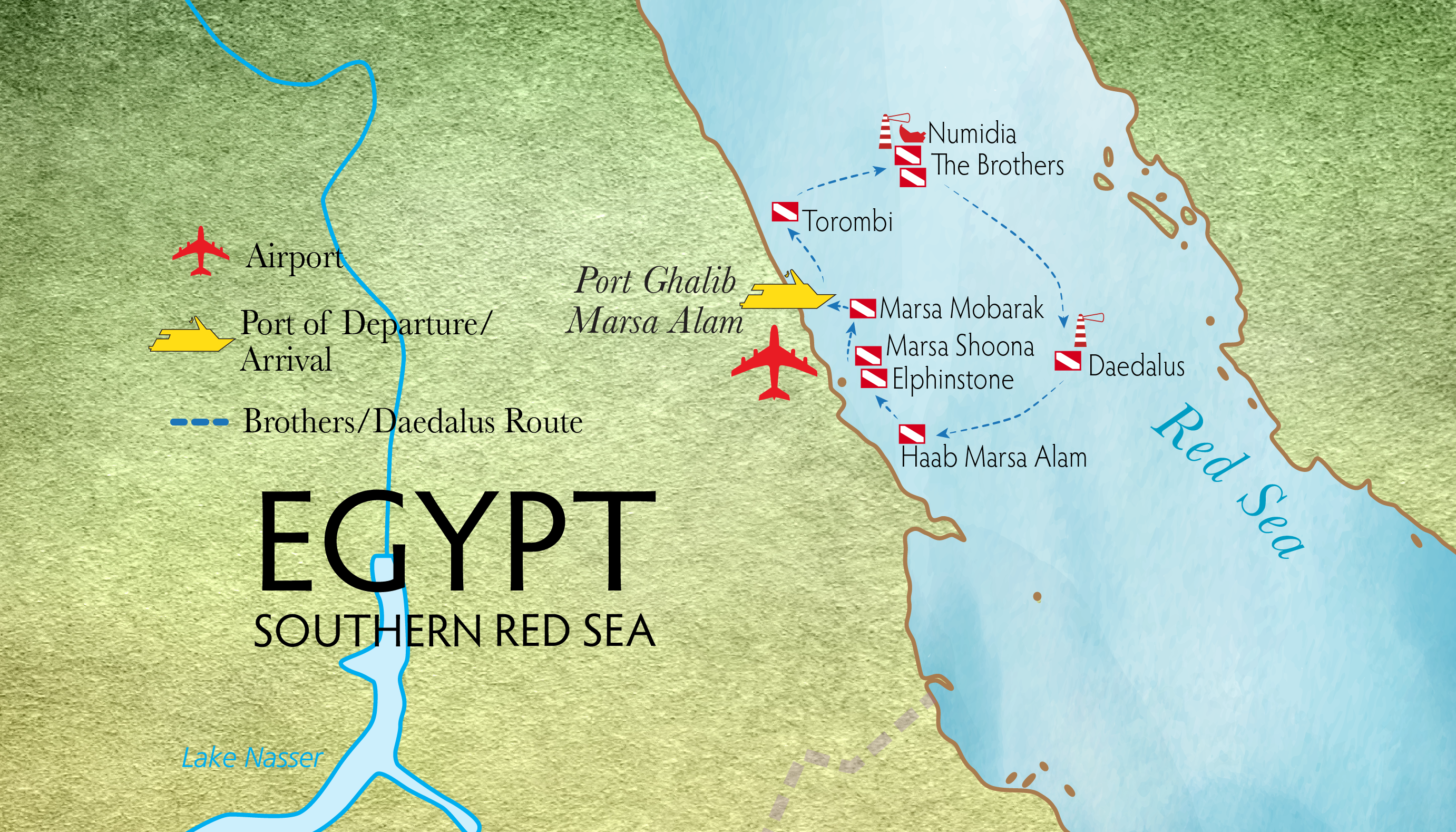
7-night Southern Red Sea
St. Johns - Daedalus Route
The Southern Red Sea St Johns - Daedalus Route itinerary provides a mixture of 20% island drift diving from the skiffs and 80% protected coral reef and cave diving from the back of the mothership. This itinerary also offers swimming with a large pod of dolphin on one day of the charter. In between dives, you may snorkel, or just relax with a cold drink and mid-morning/mid afternoon snack. Guests may dive up to 3-5 dives per day including night diving when possible. (Subject to change due to weather conditions)
Dive Sites in the Egyptian Southern Red Sea to St John's, include:
Daedalus:
This large reef, also referred to as Abu El Kizan, is found 80 km offshore from Marsa Alam. A lighthouse which was built in 1861 by the British stands tall on the small artificial island in the centre of the reef. Today it is manned by the Egyptian military. Currents tend to be much more predictable here, and divers have an excellent opportunity to spot large pelagic life such as schooling Hammerhead Sharks, Thresher Sharks which are commonly seen in the North. Manta Rays can be found anywhere (from March through to October), and Grey Reef Sharks and Whitetip Reef Sharks patrol the reef walls. Whale Sharks occasionally pass by in the summer months. Broccoli Corals in a range of candy colours grow out from the reef on all sides. There are pristine hard coral formations in the North and East especially, while overhangs are home to schools of Glass Sweepers. The Southern plateau is covered in yellow Litophyton Arboreum and Pulsing Xenia. The West has two spectacular sights... 'Anemone City' is a section of the reef wall which is covered in Magnificent Anemone. Further to the South-West is another section of the wall which is covered in Elephant Ear Coral. In terms of topography, the very North of the reef is concave. Many different fish such as Wrasse, Parrot Fish, Rabbit Fish, and Unicorn Fish congregate on top of the reef in the clear, shallow water.
Elphinstone:
Elphinstone is a very famous, cigar-shaped reef which sits 6 km out to sea from Marsa Alam. There is a long plateau in the North and South of Elphinstone with the rest of the reef being a steep, colourful wall, rich in hard and soft corals. Currents are variable, and can be strong or not present at all. While shark sightings are not guaranteed, the Longimanus cruises in the shallows in the season, and every so often, divers encounter Hammerhead Sharks, Grey Reef Sharks, Silky Sharks, and Manta Rays. Barracuda hang in the blue, and Cornet Fish use divers for cover while they hunt the Anthias.
Marsa Shoana:
(Local - Marsa Alam) Marsa Shoana is an awesome local dive site in Marsa Alam, and normally the first port of call on the Aggressor itineraries. A white sandy bottom meets a gentle, sloping reef with coral heads small, medium and large, dotted about. Divers will come across lots of different ecosystems here which, in turn, promise a wide variety of marine life both big and small. Green Turtles, various Rays and even Dolphins and Dugongs surprise those enjoying the underwater realm.
Sha'ab Maksour:
(Sataya) Sha'ab Maksour is a large reef with a wide plateau in the North and South and a wall on either side. There is plenty to see here including schools of Snapper, Dogtooth Tuna, Hawksbill Turtles and some of the healthiest hard corals you will have seen! These corals cover this reef with mounds of Porites, Dome, and Mountain Corals nestled in the shallower parts as well as untouched Table Corals jutting out perpendicularly. Some exciting macro life including the Nembrotha Megalocera has also been sighted here.
Sha'ab Claude
(Sataya) Sha'ab Claude is a spectacular dive site with its swim-throughs, short tunnels, and cave-like chambers. At less than 15m in depth, this may not be a deep dive site, but its beauty will astound you. Light scatters on the rubble floor from cracks in the reef overhead. Cave Sweepers hide in the darkness catching the light of divers' torches.
Malahi:
(Sataya) Malahi in Arabic means 'fun' and this dive site epitomises that! Great pinnacles reminiscent of ancient Greek columns tower over divers creating corridors lined with hard coral and rock that wind this way and that. Akin to an underwater maize, these corridors and swim-throughs have multiple branches that lead to the heart of the site. Schools of Snapper and Goat Fish can be found inside, as well as Wart Slugs and Nudibranchs.
Sataya Reef
(Sataya) Sha’ab Sataya. Seven imposing stacks of coral named Dha’ab Hassan guard the lagoon's entrance with depths ranging from 18m to 22m along the rim, reducing to 12m as you approach the Sataya lagoon. The outer wall of the Sataya offers some excellent drift diving. You are dropped off by zodiac and the dive begins at the North-West edge, keeping the reef to the left. Large outcrops of soft coral cover the wall and white tips are sometimes spotted half asleep underneath table coral, slowly moving away as divers approach.
St John's Caves
(St John's) The famous St John's Caves are a photographer's and videographer's paradise. Sunlight streams through cracks in the reef of the passageways above and falls as dappled sunlight on the rubble and sandy floor. While visiting it's dive sites, Paradise Reef Elturfa and Elorug Reef, watch for Bluespotted Rays gliding past and Porcupine Fish in the shadows. The many passageways are adorned with feathery Hydroids that glow red, orange and yellow as they catch the light. George, the friendly Napoleon Wrasse commonly approaches divers beneath the boat and checks his reflection out in the domes of their cameras. Enjoy searching for the Juvenile Clown Coris, Bicolour Parrot Fish, Gold-Dotted Flatworms, and at night time, Spanish Dancers!
Sample itineraries and maps are for illustrative purposes only and subject to change based on local regulations, guest experience, weather, and logistics.
